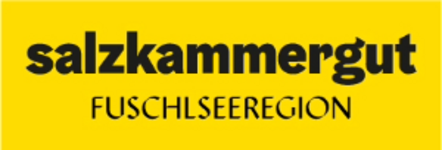Carving Krampus masks: We look over the shoulder of Bernhard Reiter from Faistenau
It all starts at the end of November. The muffled ringing of bells and wild roaring are the first signs that St Nicholas will soon be arriving with his grim companions, the Krampuses. But where do the artistically designed Krampus masks come from? We visited Bernhard Reiter in his workshop in Faistenau.
The Krampus traditionally comes with St Nicholas
Around St Nicholas' Day, 6th December, the big Krampus runs take place in the Fuschlseeregion. With ornately carved wooden masks, dishevelled costumes made of fur, wild horns and loud bells, the nasty figures wreak havoc in all communities. St Nicholas and Krampus also travel from house to house. While St Nicholas has gifts and small presents ready for the children during his house visits, the Krampus scare the children with their rods who have not been "good" during the year.
What is the difference between Krampus and Percht?
Krampuses are not the same as Perchten. Krampuses are the companions of St Nicholas. The Perchten traditionally only appear around the 5th of January in the last "Raunacht" (spiritual night) and drive away the winter spirits.
These traditional customs are important because they are part of a living culture and accompany the people of the Fuschlseeregion throughout the year. To keep these traditions alive, you need people who actively cultivate them. One of them is the Faistenau Krampus mask carver Bernhard Reiter, who we were allowed to look over his shoulder in his workshop in Faistenau.
Bernhard Reiter: The man behind the impressive Krampus masks
During the day, he works as a technician. In the evenings, Bernhard can be found carving in the workshop or socialising with his family. Bernhard Reiter has always enjoyed carving. Born in Kuchl, he used to be an active Krampus himself, travelling with the Göll-Pass. So it was only a matter of time before he tried his hand at making his own wooden mask. In 2013, the young family man finally completed his first wooden Krampus mask. He proudly presents his first work and tells me more about his passion and the craft of carving wooden masks for Krampus.
Hand-carved wooden masks with eerie charm: the art of Bernhard Reiter from Faistenau
It all starts with a good piece of wood. Bernhard prefers to use Swiss stone pine or Weymouth pine, although he likes Swiss stone pine best because it smells so good. Both types of wood are soft and easy to work with. First, the rough profile of the Krampus mask is sawn out of the wood using a chainsaw. If you look at the blank, you can already recognise the first features of the future "Krampei-Loafn".
In the next step, the first facial features are drawn on with a pencil. He works his way from the rough to the fine. He also uses cardboard templates to help him, for example to make the ears symmetrical: And then he gets started. The clamped blank is worked on with a carving knife and wooden mallet. Soon, coarser and finer facial features can be recognised.
Hours of dedication: each mask is a unique masterpiece
Bernhard keeps scrutinising the piece of wood from which the wooden mask is made. There must be no unwanted cracks in the wood. For example, the dark edge of the piece of wood must be removed. Although Swiss stone pine is considered a "soft" wood, carving a mask is hard work that requires a lot of strength and dexterity. It also takes many hours of labour to carve a mask. It is difficult to say how many, as each mask is unique.
When the Krampus mask comes to life
After the intricate carving of the mask, the eyes are inserted and the horns are attached to the Krampus mask. The wooden mask is then skilfully painted to give it its very own character. "I don't like too much blood on the masks, even if the Krampuses look like zombies, that no longer has much to do with tradition," says Bernhard about some of the trends he observes at Krampus parades.
Then the wait is over: the handover to the new owners is particularly exciting. After all, the wood-carved Krampus masks made by Bernhard Reiter only really come into their own when the Krampus costume is complete and the entire Krampus group is dressed in splendour. During my visit there were three boys from the Lidauberg-Teifin who were dressed by Bernhard Reiter - here they can be seen in all their splendour!
Krampus offspring in the Fuschlseeregion: a living tradition!
There is no need to worry about the Krampus offspring in the Fuschlseeregion. The Krampus custom is very popular and there are now numerous Krampus groups in the region. Usually young boys from the age of 10 get together and start off with rubber masks and simple costumes.
The Krampus masks of the Lidauberg-Teifin from Faistenau
It was also the case with Fabio Mösenbichler, Patrik Remis, and Lukas Schmeißner from Faistenau. When the passion remains, the desire to appear as a group with a uniform appearance quickly arises. So, together with a few friends, the boys founded the Lidauberg-Teifin. In order to be recognisable as a group, they looked for a uniform "Krampei garb" and finally ended up with the Krampus mask carver Bernhard Reiter. He provided the Lidauberg-Teifin with the scary wooden masks. We are already looking forward to being able to admire the Lidauberg-Teifin with Bernhard Reiter's scary masks at one of the Krampus runs in the Fuschlsee region!
Editor: Melanie Deisl
Travel blogger Melanie enjoys travelling to faraway countries and especially loves her home - the Fuschlsee region and the Salzkammergut. On her travel blog urlaubsgeschichten.at, she shows that you can also gain unique experiences on short trips and excursions.
- Text + photos: Melanie Deisl
- More: urlaubsgeschichten.at



